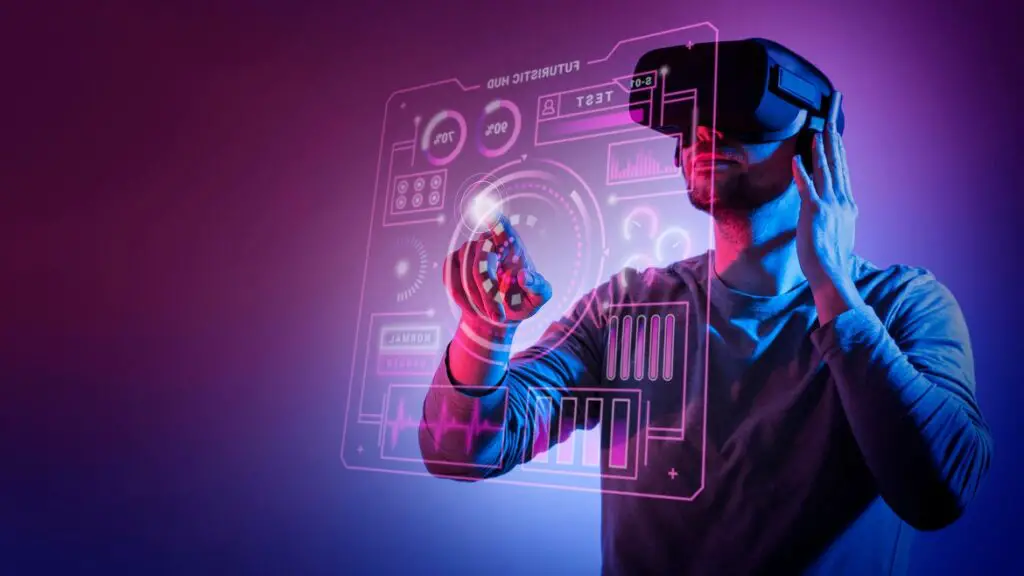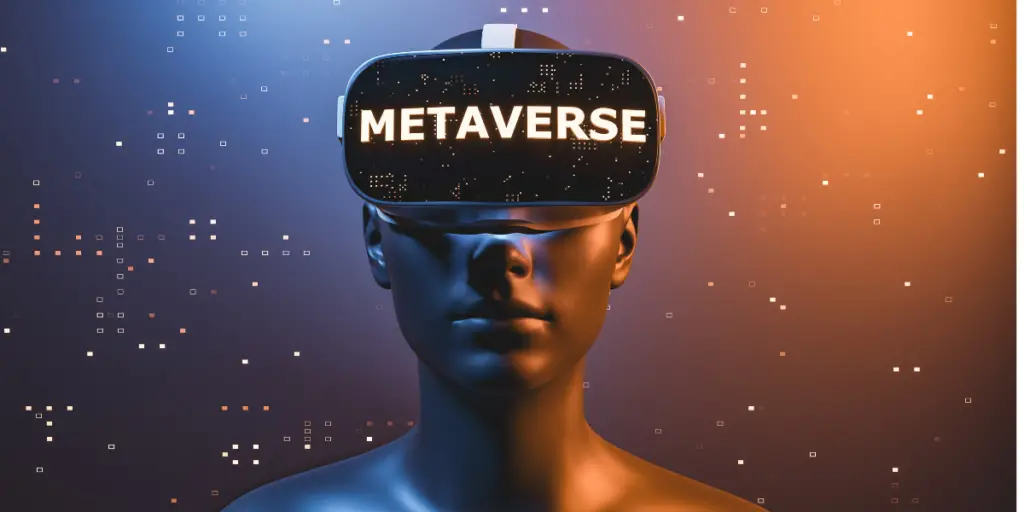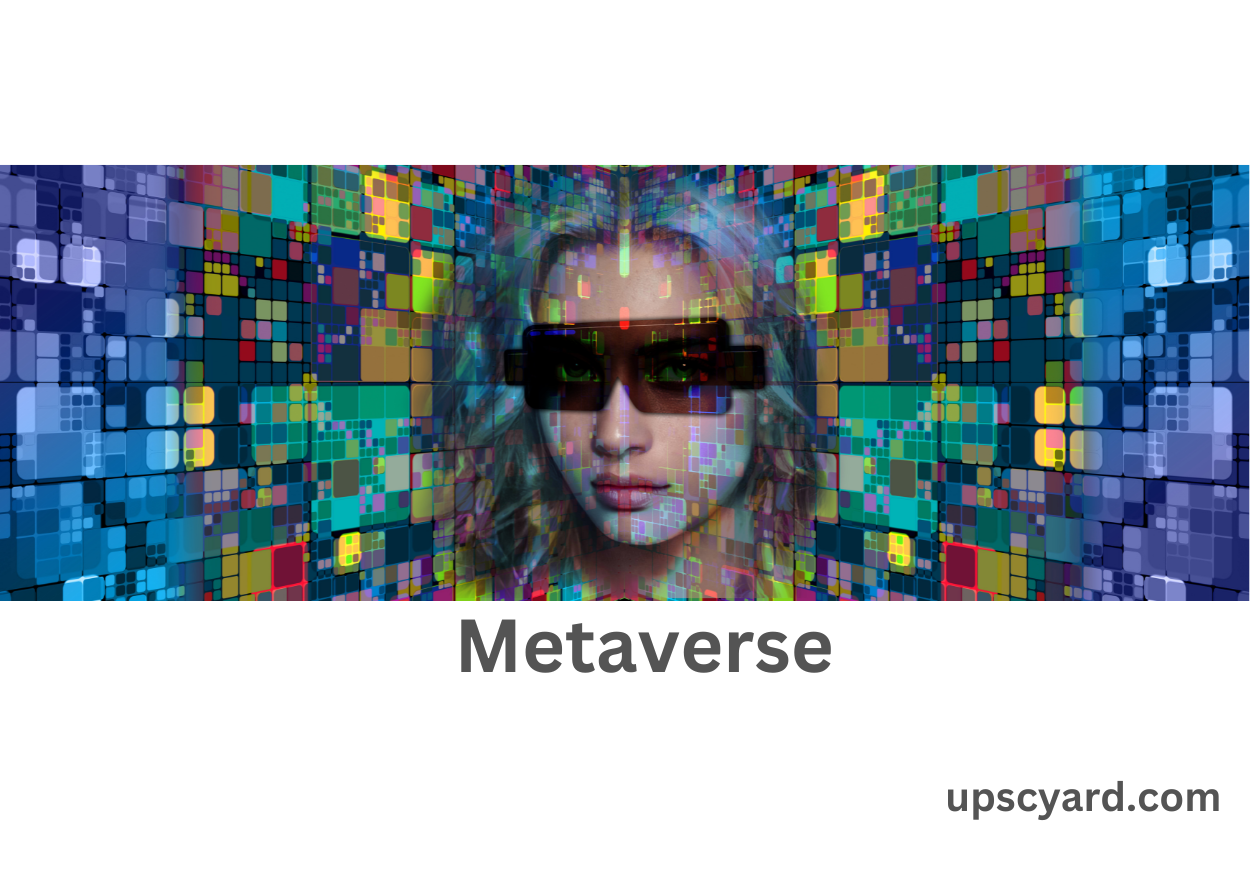


The metaverse represents an evolving digital realm with 3-D capabilities, harnessing technologies like virtual reality, augmented reality, and advanced internet and semiconductor tech. This innovative space enables individuals to engage in personally and professionally immersive online experiences.
A year and a half ago, Facebook unveiled its rebranding as Meta, signalling its commitment to the forthcoming “metaverse.” However, the term “metaverse” has somewhat lost its clarity and significance during this time. While Meta is actively constructing a virtual reality social platform, notable CEOs such as Mark Zuckerberg and Satya Nadella frequently discuss it, highlighting the metaverse as the future of the internet. Nevertheless, it has also been associated with video gaming, contributing to the ambiguity surrounding its definition and implications.
Key Aspect
What Exactly Is the Metaverse?
The metaverse is a fusion of various cutting-edge technologies, encompassing virtual reality, augmented reality, and video, where users effectively “reside” within a digitally enriched environment.
Prominent tech giants like Apple, Google, Amazon, Microsoft, and Facebook are actively involved in developing these technologies, shaping the landscape of the metaverse.
To grasp how the metaverse functions and the potential impact it might have, it is crucial to gain clarity on the following concepts and technologies:
- Virtual Reality (VR): VR involves computer modelling and simulation to enable individuals to interact with a synthetic three-dimensional (3-D) visual or sensory environment. Think of immersive games like World of Warcraft.
- Immersive Experience: VR takes you out of the natural world and immerses you entirely, providing an all-encompassing sensory experience.
- Augmented Reality (AR): AR enhances the real physical world by incorporating digital visual elements, sounds, or other sensory stimuli through technology. A prime example is games like Pokémon Go.
- Holograms: Holograms are virtual 3-D images formed through the interference of light beams, creating the illusion of tangible objects in the digital realm.
- Avatars: In the metaverse, avatars represent individuals in the virtual world, allowing them to function as if they were physically present in a digitally constructed environment.
- Platform/Developer/User Dynamics: As digital engagement in the metaverse becomes increasingly personalized, it is crucial to understand the distinct roles played by the platform, developers, and users in shaping this immersive digital realm.
Metaverse vs Internet
The metaverse and the internet may appear related, but they are distinct concepts with notable differences. The internet connects computers, facilitating information sharing and communication among people. In contrast, the metaverse envisions the internet evolving into a unified, all-encompassing virtual realm heavily reliant on virtual reality (VR) and augmented reality (AR) technology.
- The Metaverse is a virtual world where users “live” their virtual lives, and its activities may not be connected to the real world.
- In contrast, the internet is an interconnected network of websites initially created for information distribution but now serves various purposes, including shopping, entertainment, and communication.
- Social networks have transformed the internet into a platform for connecting and sharing lives with others.
- The Metaverse is a separate virtual space that runs parallel to the real world, while the internet extends and complements the physical world.
- In the Metaverse, users interact through avatars, allowing them to engage in various real-world activities.
- These activities include buying and selling goods, attending virtual events, exploring digital spaces, and more.
Immersion: The metaverse strives for a heightened level of immersion compared to the internet. Through VR and AR headsets, users can experience a genuine sense of presence within the virtual world, transcending traditional screen-based interactions.
Interactivity: Interactivity is a hallmark of the metaverse, surpassing the internet’s capabilities. In the metaverse, users consume content and actively engage with it in real-time. This encompasses gaming, attending virtual events, and even shopping within the virtual space.
Ownership: The metaverse exhibits greater decentralization than the internet. Here, data and assets are under the ownership of users rather than being controlled by a single entity or organization. This decentralized model holds the potential to foster a more democratic and open internet, empowering individual users.
Does the metaverse incorporate holograms?
Indeed, holograms hold great potential as a technology integrated into the metaverse. Holograms, being three-dimensional images generated through the interference of light beams, can create highly realistic and immersive virtual experiences.
In the metaverse, holograms could serve various purposes, enhancing the overall virtual environment:
- Realistic Avatars: Holograms can be utilized to craft virtual avatars that are remarkably lifelike, surpassing the traditional 2D avatars in terms of realism and engagement.
- Immersive Worlds: Holographic technology can be employed to design virtual environments that are incredibly immersive and captivating, offering users an unparalleled sense of presence and interaction.
- Virtual Concerts: Imagine attending virtual concerts where holograms of your favourite artists perform, allowing people worldwide to enjoy live music experiences without geographical constraints.
- Virtual Events: Holograms could create and host virtual events, including conferences, trade shows, and meetings. This accessibility could make it easier for individuals to participate in previously logistically challenging events.
- Virtual Education: Virtual classrooms enriched with holographic elements could revolutionize education. Students from diverse locations could partake in interactive learning experiences, addressing barriers such as geographical isolation and physical disabilities.
- Virtual Tourism: Holograms can offer virtual tours of culturally significant or historically rich destinations. This would enable individuals to explore and appreciate different cultures and heritage sites from the comfort of their homes, eliminating the need for costly or arduous travel.
Incorporating holographic technology into the metaverse can redefine how we connect, learn, entertain, and explore within this immersive digital realm.
Augmented Reality (AR) and Virtual Reality (VR)
Augmented reality (AR) and virtual reality (VR) are two swiftly advancing technologies poised to revolutionize our interactions with the world around us.
AR enriches the real world by overlaying digital information seamlessly onto the user’s physical environment, crafting a composite perspective where digital and fundamental elements coexist. In contrast, VR transports users into a fully immersive, computer-generated virtual realm, offering an interactive experience within this synthetic environment.
To better understand these technologies, let us examine their key distinctions:
Augmented Reality (AR)
- Definition: AR enhances the user’s real-world view by superimposing computer-generated images, resulting in a blended reality.
- Devices: AR applications can be accessed through smartphones, tablets, laptops, or specialized AR glasses.
- Applications: AR finds utility in diverse fields such as gaming, education, training, marketing, and retail, seamlessly integrating digital elements into everyday environments.
- Advantages: AR adapts well to commonplace surroundings, and its accessibility often comes at a more affordable price point.
- Disadvantages: AR experiences may be less immersive than VR, and they can be challenging to use in well-lit environments due to digital overlays.
Virtual Reality (VR)
- Definition: VR constructs an entirely simulated environment, immersing users in a three-dimensional digital world.
- Devices: VR experiences typically require headsets that completely immerse users in the virtual environment.
- Applications: VR is extensively employed in gaming, entertainment, training, healthcare, and construction, offering deeply immersive simulations.
- Advantages: VR delivers a heightened level of immersion, making it ideal for fully immersive simulations and experiences.
- Disadvantages: VR experiences can be isolating, cutting users off from their physical surroundings, and they may induce motion sickness in some individuals.
In essence, AR enhances our existing reality with digital elements, fostering a blend of the natural and virtual. At the same time, VR transports users into entirely simulated environments, offering rich interactive experiences within those digital realms. Each technology brings unique strengths and considerations, catering to various use cases and preferences.
MCQ.
Q. In the context of digital technologies for entertainment, consider the following statements: (UPSC 2019)
1- In Augmented Reality (AR), a simulated environment is created and the physical world is completely shut out.
2- In Virtual Reality (VR), images generated from the computer are projected onto real life objects or surroundings.
3- AR allows individual to be present in the world and improves the experience using the camera of smartphone or PC.
4- VR closes the world, and transposes an individual, providing complete immersion experience.
Which of the statements given above is/are correct?
(a) 1 and 2 only
(b) 3 and 4
(c) 1, 2 and 3
(d) 4 only
Answer: (b)
Q. With the present state of development, Artificial Intelligence can effectively do which of the following? (UPSC 2020)
1) Bring down electricity consumption in industrial units
2) Create meaningful short stories and songs
3) Disease diagnosis
4) Text-to-speech conversion
5) Wireless transmission of electrical energy
Select the correct answer using the code given below:
(a) 1, 2, 3 and 5 only
(b) 1, 3, and 4 only
(c) 2, 4, and 5 only
(d) 1, 2, 3, 4 and 5
Answer: (d)

